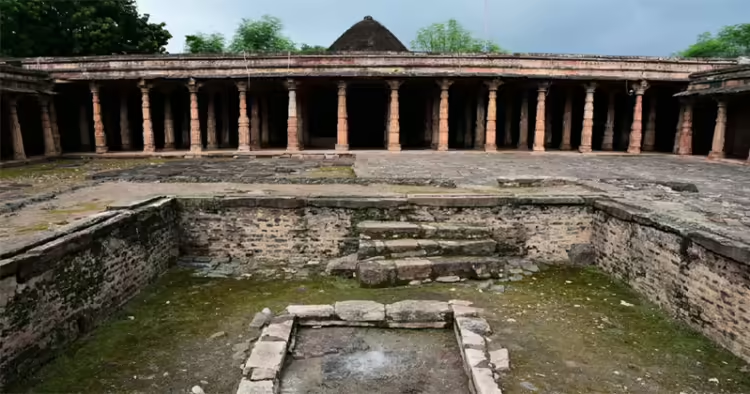On the 80th day, the Central Archaeology Department team conducted a survey in Dhar Bhojshala, Madhya Pradesh. The ASI team worked diligently from morning until evening. On June 9, they uncovered over 79 artefacts, including various small and large remnants, among which were several murtis of gods and goddesses.
Historic Discovery at Bhojshala:
On June 9, the Hindu party hailed the day as historical, as a remarkable number of artefacts were unearthed during the survey at Bhojshala.
On the 80th day of the survey, the team of the Archaeological Survey of India opened the closed room. According to the Hindu side, about 79 remains have been found, including the murtis of Bhagwan Ganesha, Maa Vagdevi, Maa Parvati, Maa Mahishasura Mardini, Hanuman, murtis of gods and goddesses, and Shankh Chakra Shikhar with Sanatani figures.
The 8 by 10 feet closed room was unveiled in the presence of both the parties. Videography and photography of the room were also done. Ashish Goyal, the petitioner of Hindu Front for Justice, called it the biggest achievement so far. He said that the closed room under ASI was opened. After removing the floor, the soil was removed. The first murtis found in the room were of Bhagwan Ganesha, Maa Parvati, Mahishasura Mardini and Hanuman. Some murtis are one and a half feet tall, while some are two to two and a half feet tall.
Remains also found near the northern side and Yagyashala: During the soil levelling in the northern part, about six remains, including the base of the pillar and the middle part, have been found. Six big Sanatani remains have also been found while removing soil from the marked place near the Yagyashala on the inside. ASI included these in the investigation. Gopal Sharma of the Hindu side said that due to rain, the trench made around Bhojshala is also being closed by filling it with soil. The remains found on Sunday are certified and are the highest number found in a day in the survey conducted so far.
According to the official website of the Dhar district, the Bhojshala temple was built by Raja Bhoj. Raja Bhoj was a great king of the Parmar dynasty who ruled from 1000 to 1055 AD. It is said that in 1305 AD, Alauddin Khilji attacked Bhojshala, and in 1401 AD, Dilwar Khan Gauri built a mosque in one part of Bhojshala and in 1514 AD, Mahmud Shah Khilji built a mosque in the other part. When excavation was done here in the 19th century, the statue of Saraswati Devi was found, which the British took with them. This statue is currently in the museum in London. There is also a dispute about bringing this statue back to India. After the independence of the country, the controversy started increasing regarding worship and namaz in Bhojshala. The court has just allowed Hindus to worship here with entry on Tuesday and has allowed the Muslim community to offer namaz in the premises on Friday. Whenever Basant Panchami comes on Friday, the dispute increases. Both sides dispute their worship and namaz. Now the ASI survey is going on here only on the court’s orders.











![A Representative image [ANI Photo]](https://organiser.org/wp-content/uploads/2025/12/representative-image-e1765612818961-120x70.webp)







Comments